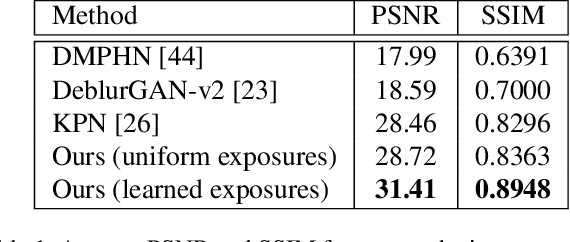Omer Dahary
Visual Diffusion Models are Geometric Solvers
Oct 24, 2025Abstract:In this paper we show that visual diffusion models can serve as effective geometric solvers: they can directly reason about geometric problems by working in pixel space. We first demonstrate this on the Inscribed Square Problem, a long-standing problem in geometry that asks whether every Jordan curve contains four points forming a square. We then extend the approach to two other well-known hard geometric problems: the Steiner Tree Problem and the Simple Polygon Problem. Our method treats each problem instance as an image and trains a standard visual diffusion model that transforms Gaussian noise into an image representing a valid approximate solution that closely matches the exact one. The model learns to transform noisy geometric structures into correct configurations, effectively recasting geometric reasoning as image generation. Unlike prior work that necessitates specialized architectures and domain-specific adaptations when applying diffusion to parametric geometric representations, we employ a standard visual diffusion model that operates on the visual representation of the problem. This simplicity highlights a surprising bridge between generative modeling and geometric problem solving. Beyond the specific problems studied here, our results point toward a broader paradigm: operating in image space provides a general and practical framework for approximating notoriously hard problems, and opens the door to tackling a far wider class of challenging geometric tasks.
Be Decisive: Noise-Induced Layouts for Multi-Subject Generation
May 27, 2025Abstract:Generating multiple distinct subjects remains a challenge for existing text-to-image diffusion models. Complex prompts often lead to subject leakage, causing inaccuracies in quantities, attributes, and visual features. Preventing leakage among subjects necessitates knowledge of each subject's spatial location. Recent methods provide these spatial locations via an external layout control. However, enforcing such a prescribed layout often conflicts with the innate layout dictated by the sampled initial noise, leading to misalignment with the model's prior. In this work, we introduce a new approach that predicts a spatial layout aligned with the prompt, derived from the initial noise, and refines it throughout the denoising process. By relying on this noise-induced layout, we avoid conflicts with externally imposed layouts and better preserve the model's prior. Our method employs a small neural network to predict and refine the evolving noise-induced layout at each denoising step, ensuring clear boundaries between subjects while maintaining consistency. Experimental results show that this noise-aligned strategy achieves improved text-image alignment and more stable multi-subject generation compared to existing layout-guided techniques, while preserving the rich diversity of the model's original distribution.
Be Yourself: Bounded Attention for Multi-Subject Text-to-Image Generation
Mar 25, 2024



Abstract:Text-to-image diffusion models have an unprecedented ability to generate diverse and high-quality images. However, they often struggle to faithfully capture the intended semantics of complex input prompts that include multiple subjects. Recently, numerous layout-to-image extensions have been introduced to improve user control, aiming to localize subjects represented by specific tokens. Yet, these methods often produce semantically inaccurate images, especially when dealing with multiple semantically or visually similar subjects. In this work, we study and analyze the causes of these limitations. Our exploration reveals that the primary issue stems from inadvertent semantic leakage between subjects in the denoising process. This leakage is attributed to the diffusion model's attention layers, which tend to blend the visual features of different subjects. To address these issues, we introduce Bounded Attention, a training-free method for bounding the information flow in the sampling process. Bounded Attention prevents detrimental leakage among subjects and enables guiding the generation to promote each subject's individuality, even with complex multi-subject conditioning. Through extensive experimentation, we demonstrate that our method empowers the generation of multiple subjects that better align with given prompts and layouts.
Digital Gimbal: End-to-end Deep Image Stabilization with Learnable Exposure Times
Dec 08, 2020



Abstract:Mechanical image stabilization using actuated gimbals enables capturing long-exposure shots without suffering from blur due to camera motion. These devices, however, are often physically cumbersome and expensive, limiting their widespread use. In this work, we propose to digitally emulate a mechanically stabilized system from the input of a fast unstabilized camera. To exploit the trade-off between motion blur at long exposures and low SNR at short exposures, we train a CNN that estimates a sharp high-SNR image by aggregating a burst of noisy short-exposure frames, related by unknown motion. We further suggest learning the burst's exposure times in an end-to-end manner, thus balancing the noise and blur across the frames. We demonstrate this method's advantage over the traditional approach of deblurring a single image or denoising a fixed-exposure burst.
 Add to Chrome
Add to Chrome Add to Firefox
Add to Firefox Add to Edge
Add to Edge